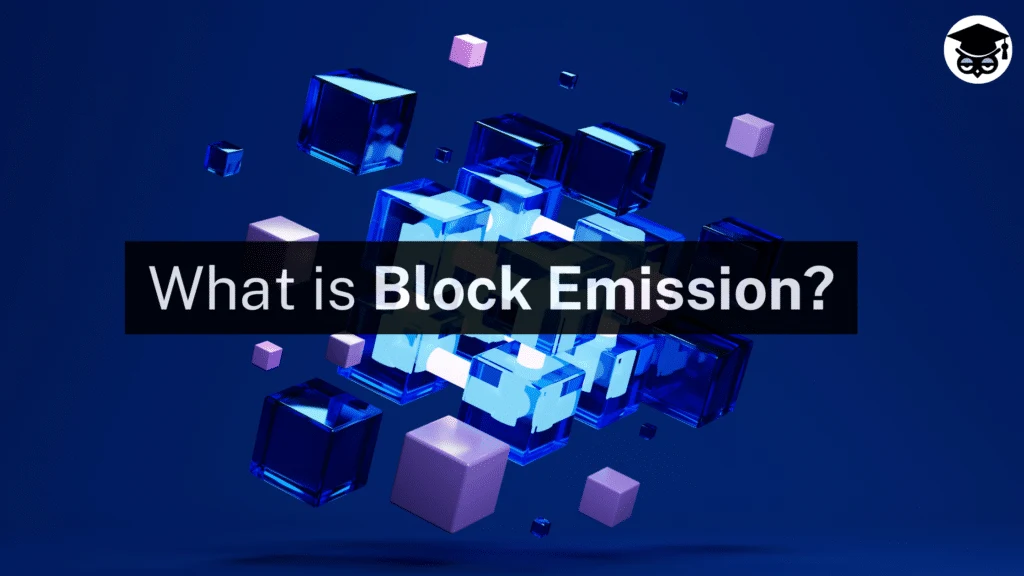What is a Block Emission?
Block emission refers to the rate at which new cryptocurrency coins or tokens are released into circulation.
The Long Definition
Block emission refers to how many new crypto tokensare made every time a group (block) of transactions is validated. It tells us how fast new tokens are minted and released into circulation.
Cryptocurrencies have different block emissions, depending on what they’re trying to achieve. Some have a fixed emission, meaning the rate at which new coins are made per block is constant, while others have a variable rate.
Block emission plays a massive role in tokenomics – the supply and demand characteristics of a crypto project.

Understanding block emission
Block emission refers to how quickly new coins are released. There is no set emission rate for the entire cryptocurrency industry. Instead, each crypto project has its own rate based on how it is set up and the goals its creators have for it. Here are a couple of examples.
Bitcoin
Bitcoin’s block emission stands at 6.25 BTC per block. On the network, it takes approximately ten minutes to add a new block to the blockchain. Therefore, every ten minutes, 6.25 new Bitcoins enter circulation. This translates to about 900 new coins per day.
Bitcoin’s isn’t constant, however. Instead, it reduces after every 210,000 blocks.
For example, when Bitcoin launched in 2009, the block reward stood at 50 BTC. This brought in around 7200 new coins per day. Since then, Bitcoin’s block rewards have halved three times, reaching 6.25 in May 2020.
The next halving will take place in 2024. After that, it will be followed by another in 2028, another in 2032, and more every four years until emissions finally stop in 2140. Why is that?
Reducing emissions over time prevents an influx of bitcoins in the market. This helps keep the cryptocurrency valuable.

Ethereum
Before The Bellatrix Upgrade, Ethereum released 2 ETH per block and up to 1.75 ETH per ommer block. An ommer block is a valid block that wasn’t added to the blockchain due to a valid competing block being added first.
Around 6,000 blocks were mined each day (ommer included) on the Ethereum network. This translated to a daily emission rate of around 13,000 new Ether (ETH).
After the Merge, the blockchain got rid of mining. Mining rewards were replaced with staking rewards, lowering the daily emission rate to around 1,600 ETH.
Why is the block emission rate important?
The amount of coins in circulation (among other factors) determines how valuable a cryptocurrency is. Generally, the more coins in circulation, the less valuable they are due to inflation.
This is why projects try to control their block emission to ensure there aren’t too many coins in circulation. Minting new coins/tokens too quickly can cause its supply to outpace demand, causing the price of an asset to fall.
